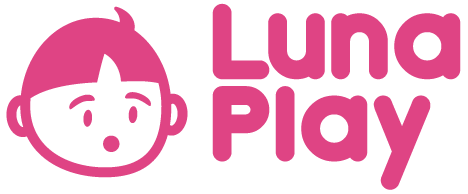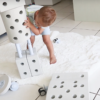Modu Dreamer Kit Toy Review (2023)
Why some toys don’t work
You might be struggling with a child that keeps wanting to go out. Nothing against that, but you know you’re too busy to keep going out.
Or you’re just too busy to keep looking after your child who’s playing with Lego. When toymakers say that toys are to be used under ‘parental supervision’, they definitely didn’t expect work from home to be a thing.
A real thing.
Where bosses are calling you, colleagues are asking you for updates, and if you’re gone from Teams for even just an hour, colleagues can start whispering behind your back that you’re … (ahem…) slacking.
You don’t want your kid to swallow the Lego too.
And if your kid is below 3, he might not even have the dexterity to put the Lego together.
You’ve heard of things like play therapy – but honestly, where do we have time for play in Singapore?
Other times, children get quickly bored of toys. After all, all toys do is sit there.
They can’t move, like in Toy Story.
So you need something that’s self-stimulatory, and can entertain your child, without you.
What can you do?
Enter Modu
We weren’t paid by Modu to write this – though you can definitely buy more Modu from us.
Is it too pricey?
Well, you might look at the beginning price of the Modu at $215, and wonder if it’s too pricey.
And relax. You don’t have to go making a killing in the stock market to figure out how to earn more money to buy more Modu.
Let me explain.
Here’s a comparison table of different toys you could get.
| Toy type | Cost | Pros | Cons |
|---|---|---|---|
| Lego | $50 to 80 per kit | Can look aesthetically pleasing | You might need to supervise the child so he doesn’t swallow the parts |
| Soft toys, or figurines like Barbie | $30 to $50 per set | Easy to bring around | Can be limited in terms of types of play |
| Modu | $215 | Looks expensive | Infinitely many possibilities to play with |
After all, there are many other toys that are cheaper. And it does seem like all you’re paying for are a bunch of foam blocks, with links in between.
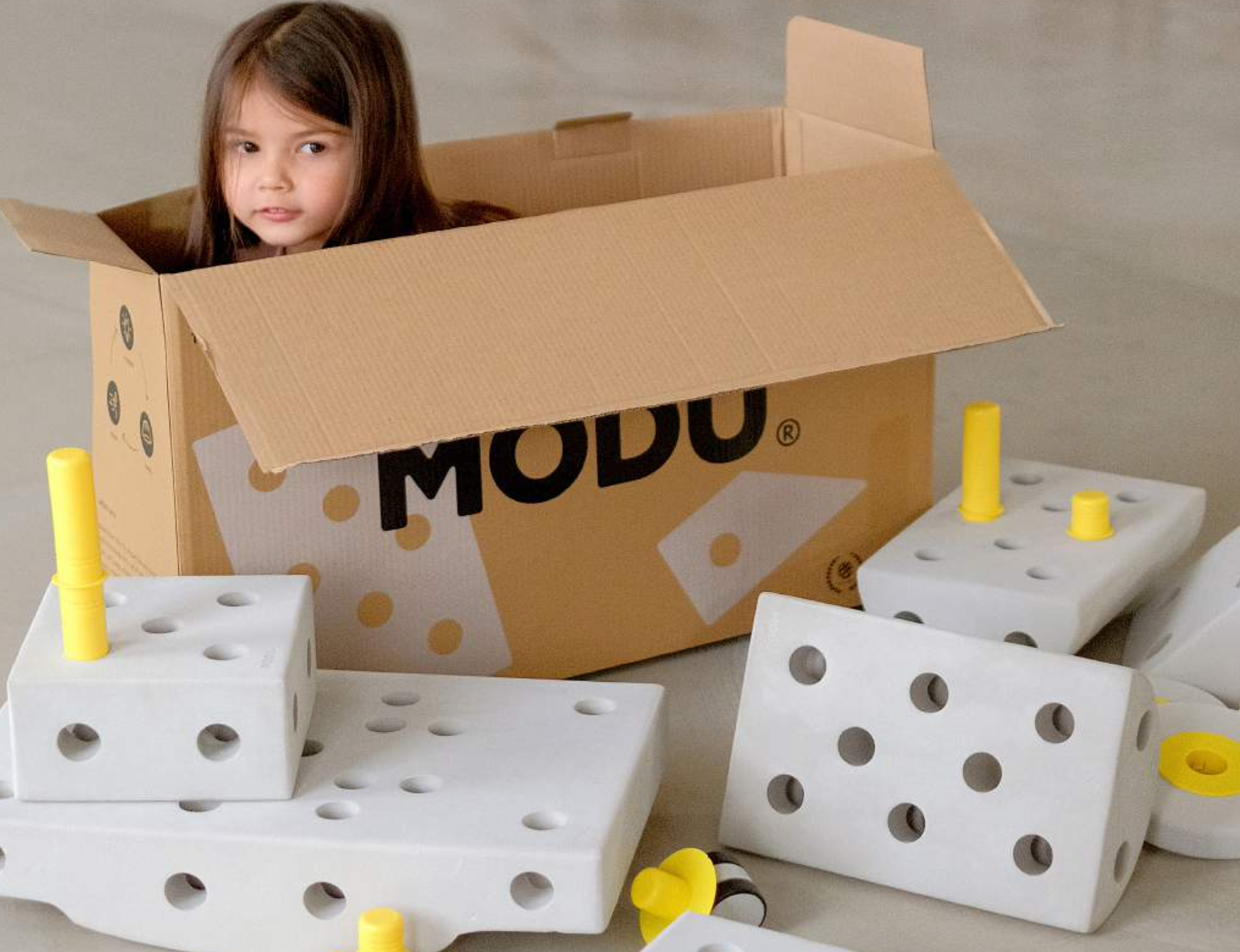
You might be thinking,
What am I actually paying for?
But here’s a question,
What’s the price of your child’s development?
Is it really worth that $200 you save by getting second-hand toys from the likes of Carousell?
Don’t get me wrong. There’s nothing wrong about second-hand toys. But often these toys are close-ended. This means that they are used for a specific purpose, and that once the child finishes the ‘play loop’, it’s over.
For example it may be a puzzle. Put it together, and the game is over.
And whilst this can train your child in repetitive skills, important skills such as creativity may be less used with these toys.
Creativity comes with open-ended toys
As a young boy, whilst I never got to play with something like Modu, my parents knew early on to let me build my own worlds with toys that were more like building blocks, rather than those that had an explicit purpose.
For example, they often spread a huge mat on the floor, rolled out big blocks for me, and let me imagine whatever it was I wanted to create.
It gave me the liberty to incorporate play, and later to see my studies more playfully.
I didn’t realise it at that time but when I eventually became a social worker and saw how other parents were handling play with their child, I found out what my parents did was unique.
Some parents would simply put their child in front of a playmat, scatter the many toys from the box, and expect them to play.
You’re different.
You want the best for your child.

But you might be still wondering whether it’s worth it to give your child a bunch of blocks.
It is. Children come to create much more easily than adults, because they haven’t gotten the inhibitions that come from scoldings and criticism.
That’s why they build sandcastles on the beach, even though the next wave could possibly wash it out.
Modu provides the structure, space and environment whereby children can play.
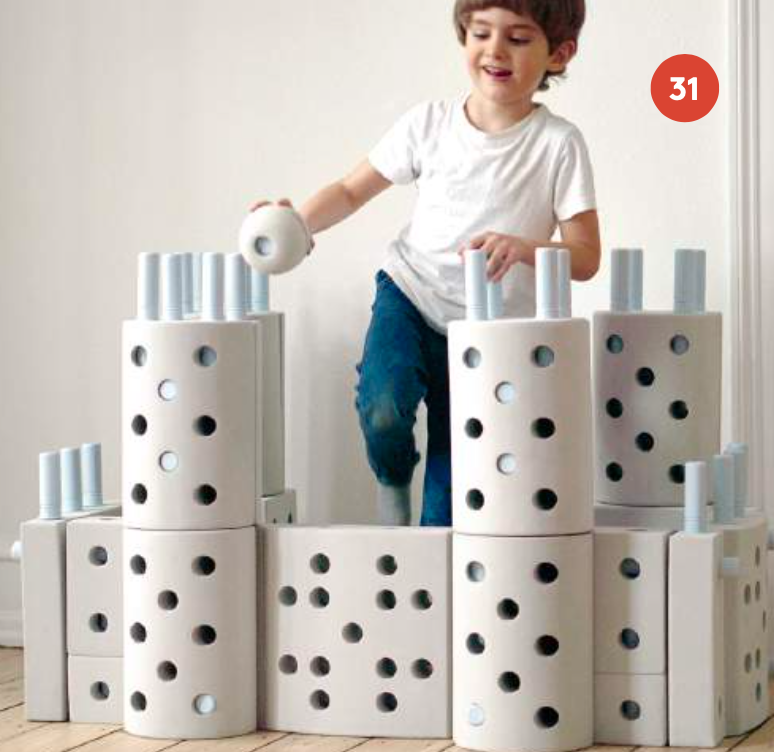
Imagine if today your boss told you to just work, without telling you what to work on. You would be lost.
It’s the same with the toys you might have traditionally gotten for your child. Your child would normally need to be taught how to put a puzzle together.
Repetition will help them to put it together faster.
But with Modu, show them a couple of pictures, and they would already have many ideas in mind about what they can actually make.
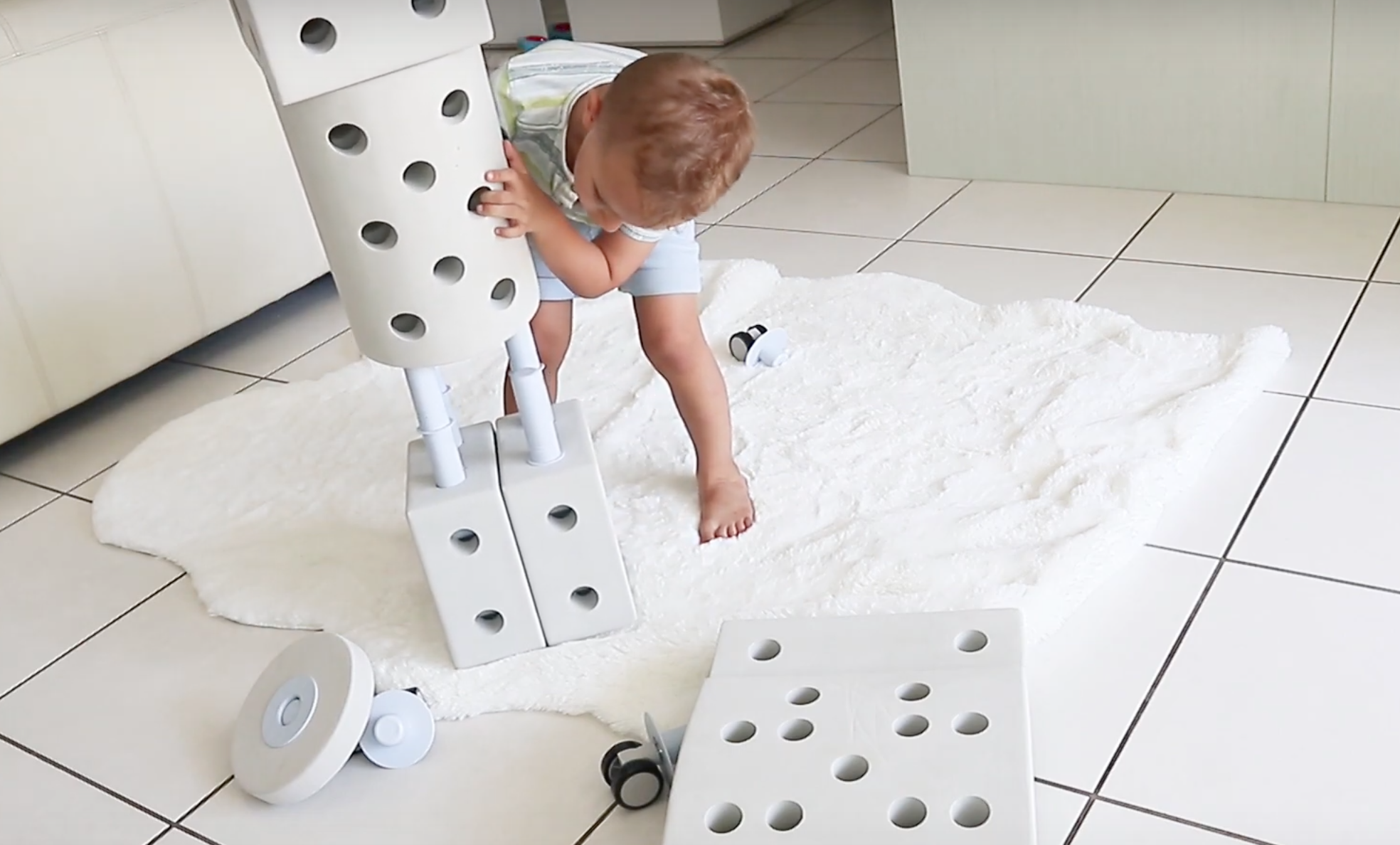
The act of creating
Sir Jony Ive was the Chief Design Officer of Apple who introduced hits like the iPod, iPhone, and the Mac.
He recounts that when he was young, he was already learning how to tinker with items.
For a project for Newcastle Polytechnic, he came up with hundreds of prototypes before eventually landing on the final design.
Giving your child life size blocks to put together can be instrumental in helping them to learn how to tinker and learn to create.
Don’t underestimate what this does for the child in future.
Modu needs little supervision
Often, we are afraid that our child will swallow the toy. But with Modu, there’s no such worry.
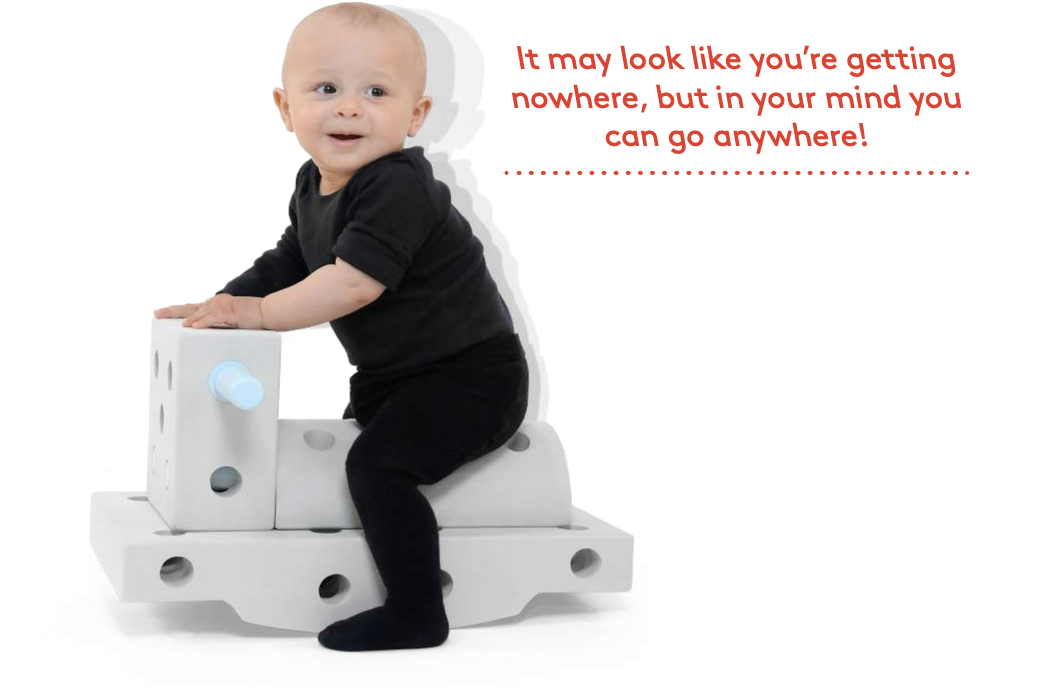
The items are large enough not to be swallowed.
More importantly, your child can be constantly stimulated with the different playkits they can create from a single Explorer Kit.
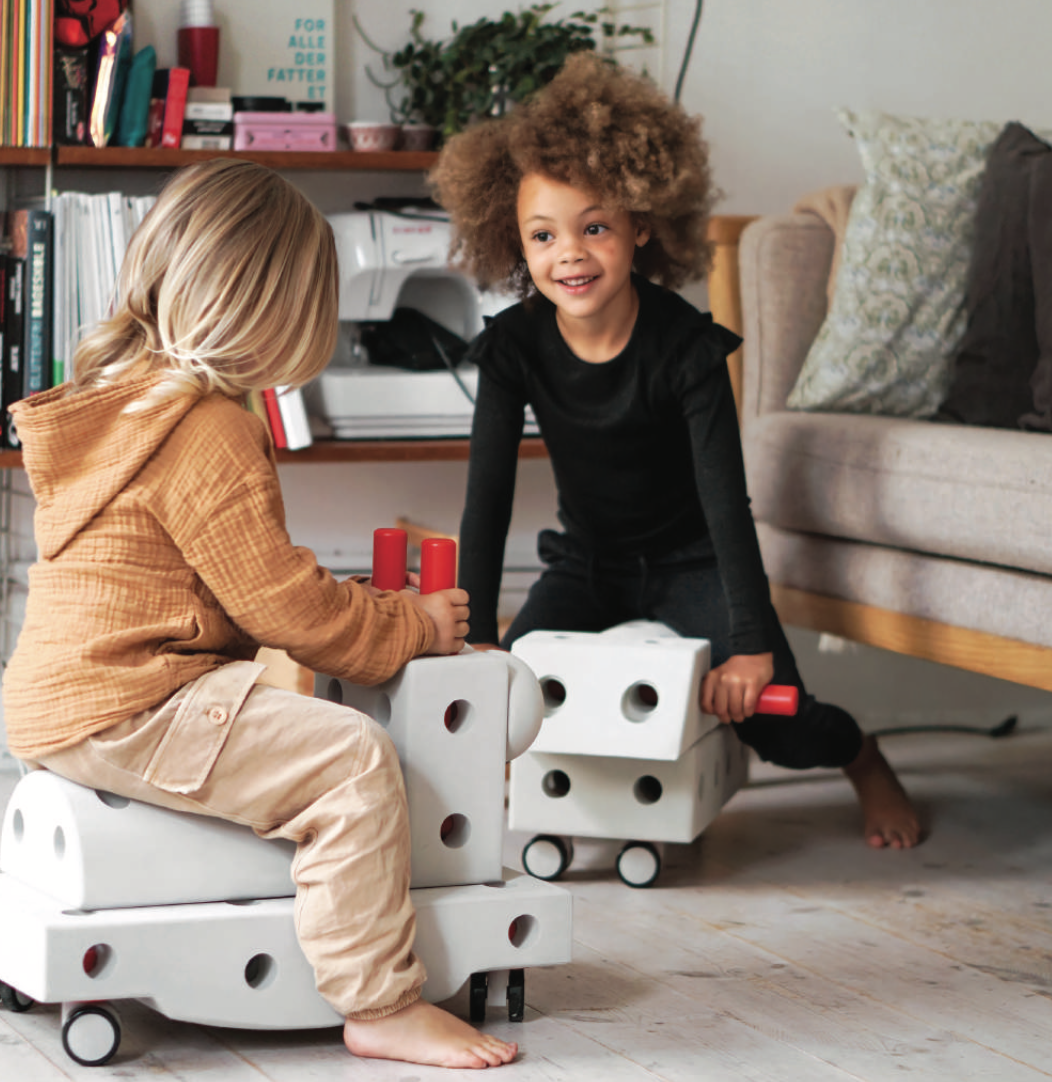
If you look at the playkits they can create, they can keep being entertained for hours! Whether it be racing, rocking, or simply resting on top of the Modu, there’s little reason why you shouldn’t get the toy.

Toys that look like decoration
But the most difficult (and backbreaking) part of being a parent might be picking up all the toys after your child is done playing with it.
You might wonder why toymakers didn’t think of just how backbreaking it is to pick up toy after toy, after toy.
Not so with Modu.
If your child has finished with it, you can just place it in a corner.
And it looks presentable immediately!
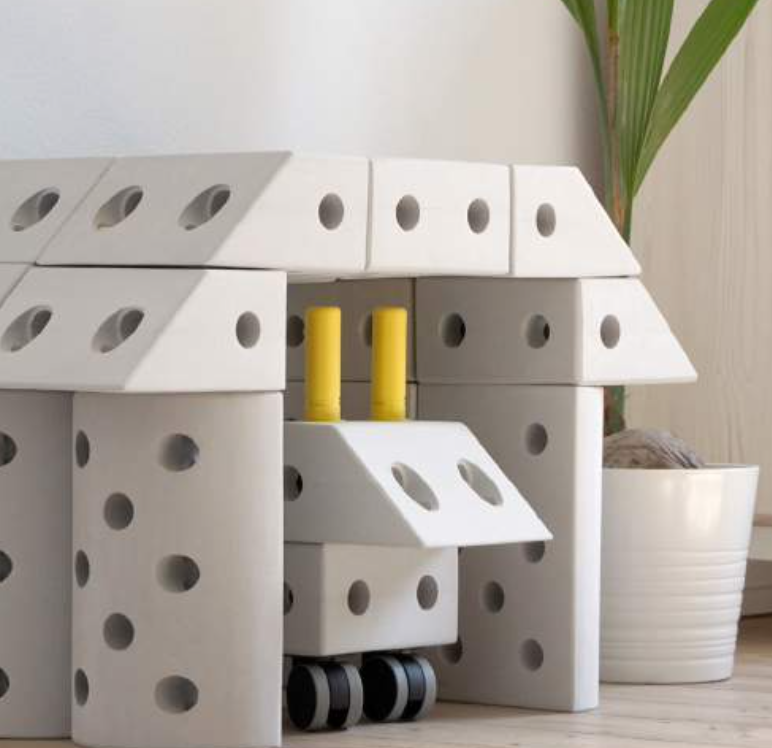
What is the price of your child’s development?
Perhaps you might be thinking whether it’s still worth the money.
Think about it this way.
You can save that money. But if you buy it, you give your chance to build a new world, with his own hands.
